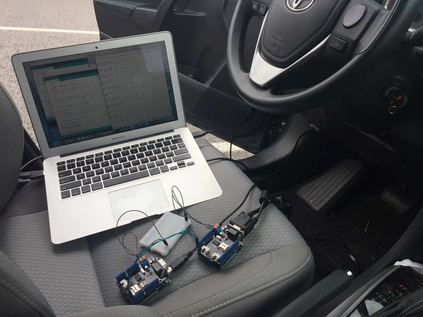In resource-constrained IoT networks, the use of conventional message authentication codes (MACs) to provide message authentication and integrity is not possible due to the large size of the MAC output. A straightforward yet naive solution to this problem is to employ a truncated MAC which undesirably sacrifices cryptographic strength in exchange for reduced communication overhead. In this paper, we address this problem by proposing a novel approach for message authentication called \textit{Cumulative Message Authentication Code} (CuMAC), which consists of two distinctive procedures: \textit{aggregation} and \textit{accumulation}. In aggregation, a sender generates compact authentication tags from segments of multiple MACs by using a systematic encoding procedure. In accumulation, a receiver accumulates the cryptographic strength of the underlying MAC by collecting and verifying the authentication tags. Embodied with these two procedures, CuMAC enables the receiver to achieve an advantageous trade-off between the cryptographic strength and the latency in processing of the authentication tags. Furthermore, for some latency-sensitive messages where this trade-off may be unacceptable, we propose a variant of CuMAC that we refer to as \textit{CuMAC with Speculation} (CuMAC/S). In addition to the aggregation and accumulation procedures, CuMAC/S enables the sender and receiver to employ a speculation procedure for predicting future message values and pre-computing the corresponding MAC segments. For the messages which can be reliably speculated, CuMAC/S significantly reduces the MAC verification latency without compromising the cryptographic strength. We have carried out comprehensive evaluation of CuMAC and CuMAC/S through simulation and a prototype implementation on a real car.
翻译:在资源受限制的IOT网络中,由于MAC输出的庞大规模,不可能使用常规信息认证代码(MACs)来提供信息认证和完整性。一个简单而天真的解决办法是使用一个耗尽的MAC,不必要地牺牲加密能力以换取通信管理费的减少。在本文件中,我们通过提出一种名为\textit{Cumultiation Mession Reformation code的新型信息认证方法来解决这一问题,该方法由两个不同的程序组成:\ textit{agnet}和\textit{culturation}。在汇总中,发送者通过使用系统的编码程序,从多个MACs的各部分生成压缩认证标记。在积累过程中,接收者通过收集和核实认证标记标签,积累信息的新方法称为\ textitilitutitute{CumMAC} (CMACsrealendrial-midiction) 和处理认证标记标签时,接收者能够通过加密能力实现一个有利的交易交易权交易权交易权交易权交易权,我们可以将CMACsurevildrus 递解程序转换。






















